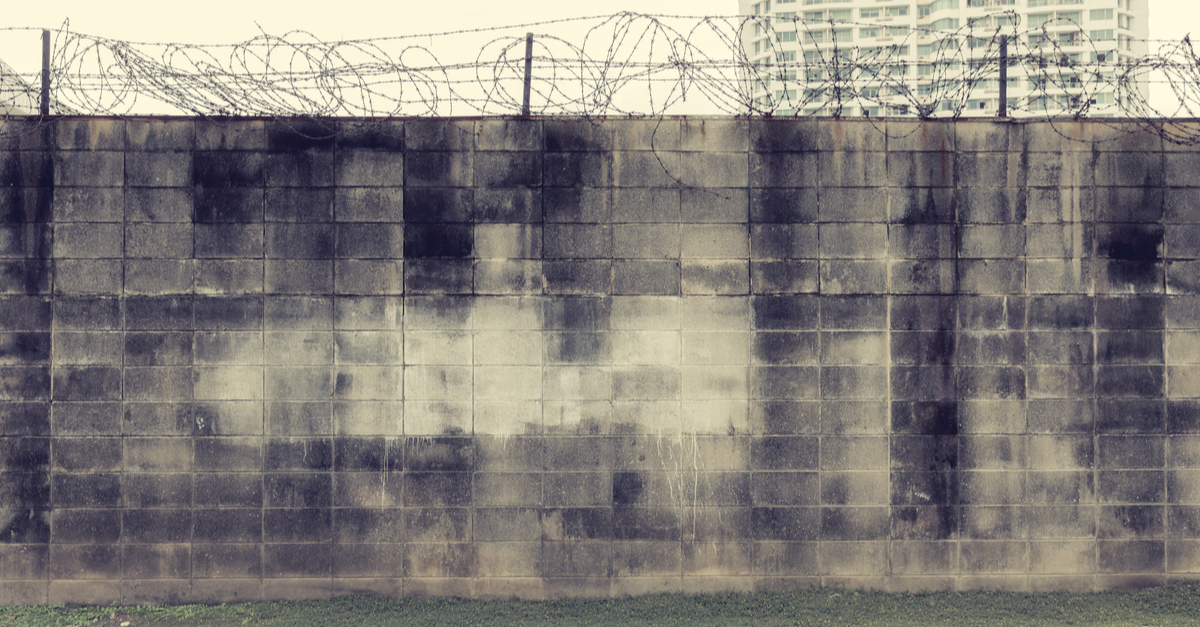Setting Healthy Boundaries as Part of Recovery
 Scott Brassart
Scott Brassart
When I entered recovery, I thought I had boundaries. I was wrong. What I had was a set of very thick, very tall, barbed wire topped walls. I painted a great big smiley face on the outside of those walls so you’d think I was a nice person. But sometimes the mouth of the smiley face would open up and I’d spit something unpleasant at you.
That’s how I picture it in my head, anyway.
I wanted you to think I was a nice person (even though I wasn’t) and to like me (even though I didn’t like myself). But I wouldn’t become vulnerable in any way and let you in. I would not, under any circumstances, let you see the real me. At the same time, I felt free to invade your space whenever the urge struck. And the urge struck fairly often. You were not allowed to comment on my thinking or my behavior or to correct my mistakes. Ever. But I could do all of those things to you, fully expecting you to listen and take heed.
I thought: If you would all just behave the way I want you to behave, the world would be a much nicer place. And if you’d complied with that, it’s possible that my little corner of the world would have been a bit more pleasant, even if the rest of the world was a bit worse off. As an addict, I didn’t much care about your problems. I wanted what I wanted, and I wanted it several minutes ago.
Unsurprisingly, two of the first (and most useful) things I learned as part of my recovery involved the setting of healthier boundaries. These lessons weren’t described to me as a new way to think about interpersonal boundaries, but that’s what they were. Those lessons were as follows:
- If I want to get better, I’m going to have to start trusting others with the truth about myself.
- The only person I have any control over is me.
In the early days of sobriety, those ideas were fascinating and novel and somewhat difficult to wrap my head around. I’d spent my whole life either pushing people away or trying to control their thoughts and actions. Occasionally, I’d tried to do both at the same time. And suddenly I was being told that I needed to do the exact opposite. That was frightening. If I’m not controlling your access to me along with your thinking and behavior when you’re in my vicinity, how will I stay safe?
In time, I learned that healthy boundaries are not about keeping other people out; instead, healthy boundaries are about letting other people safely in. At the same time, they keep me from invading your space in ways that violate your healthy boundaries. More importantly, my boundaries should never be about controlling your behavior; instead, my boundaries are about my own behavior. I have a right to experience my own thoughts, my own feelings, and my own sense of reality. You, in turn, have the same right.
If I respect your boundaries and you respect mine, we’re likely to get along just fine. If you behave in ways that are safe for me, I can let you in. In time, I may learn to trust you, and I may be willing to become vulnerable in ways that allow you to see the real me – even the parts of me that I feel shame about. If I behave in ways that are safe for you, you can choose to let me in, and the same trust-building process might happen again, but with me getting to know the real you.
That is what therapists refer to as intimate connection. When two people respect each other’s boundaries and slowly get to know and trust one another, a bond forms. It might be romantic, it might be friendship, it might be something else. But there is a connection that was not there before, and both parties are better off as a result.
Developing meaningful relationships by establishing and maintaining healthy boundaries is a pretty awesome process. It’s also what I did not do as an active addict (and even before my addictions kicked in, to be honest). So I had to learn how to become vulnerable in ways that are safe for me, often through trial and error, as part of my ongoing process of recovery. I also had to learn to respect the right of others to think and behave as they choose.
Both lessons were difficult, and I still make mistakes with my (and your) boundaries. That said, in a general way I’ve dismantled the wall and the false smiley face, and I let people see the real me. (I’ve worked through a lot of the deep shame I was carrying, so this is easier than it once was.) I’ve also learned that if I try to control the thoughts and behaviors of others, all I’m going to get from that is frustrated because you don’t want to be controlled by me any more than I want to be controlled by you.
Over time, healthy boundaries have become a key aspect of my recovery, and I’m incredibly grateful that I am able (for the most part) to set them and keep them. This has allowed me to become fully known with a wonderful group of friends (even the secrets I thought I’d take to the grave). This ability and willingness to intimately connect is not something I ever expected or even hoped for when I entered recovery, but it’s among the gifts of healing that I appreciate the most.
If you are interested in learning more about healthy boundaries, Seeking Integrity offers some useful low-cost online workgroups for both addicts and betrayed partners. Addicts should consider Seeking Integrity’s Out of the Doghouse Workgroup. Betrayed Partners should consider Seeking Integrity’s Workgroup for Betrayed Partners.
